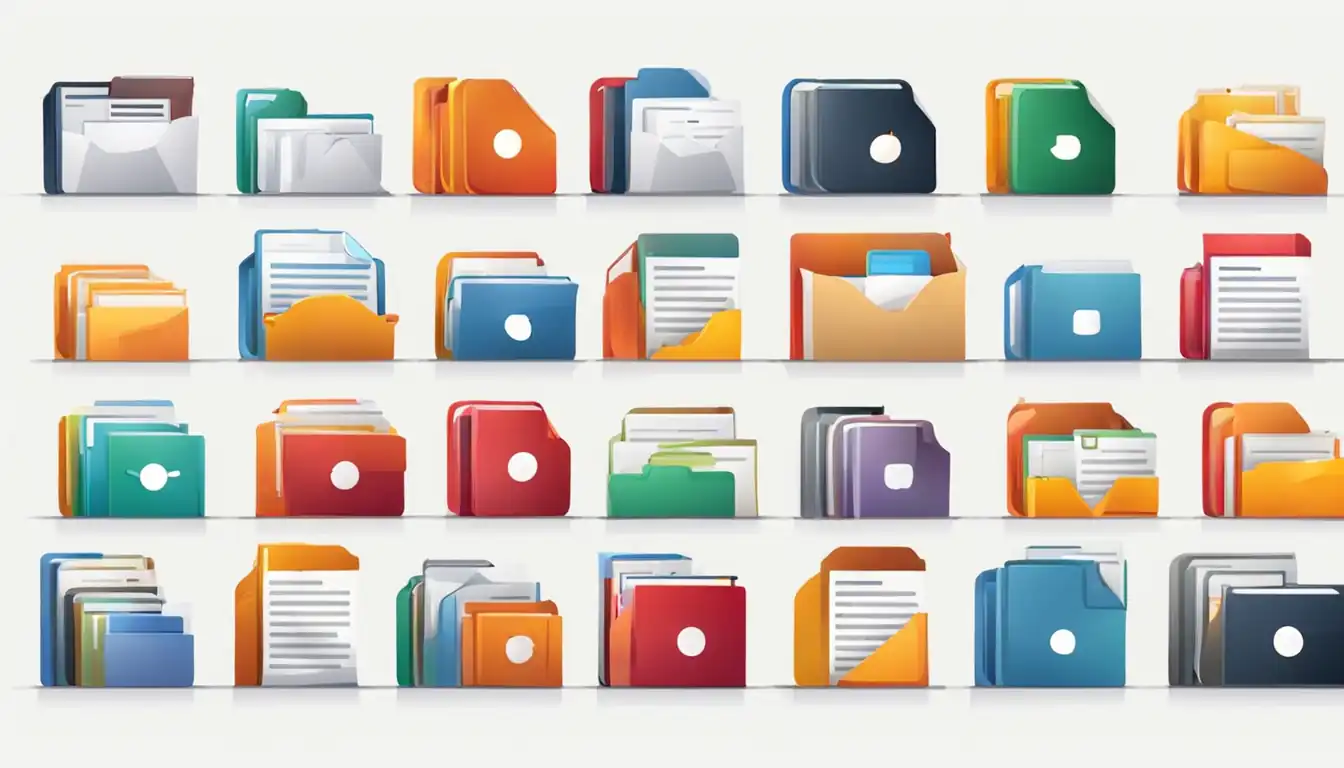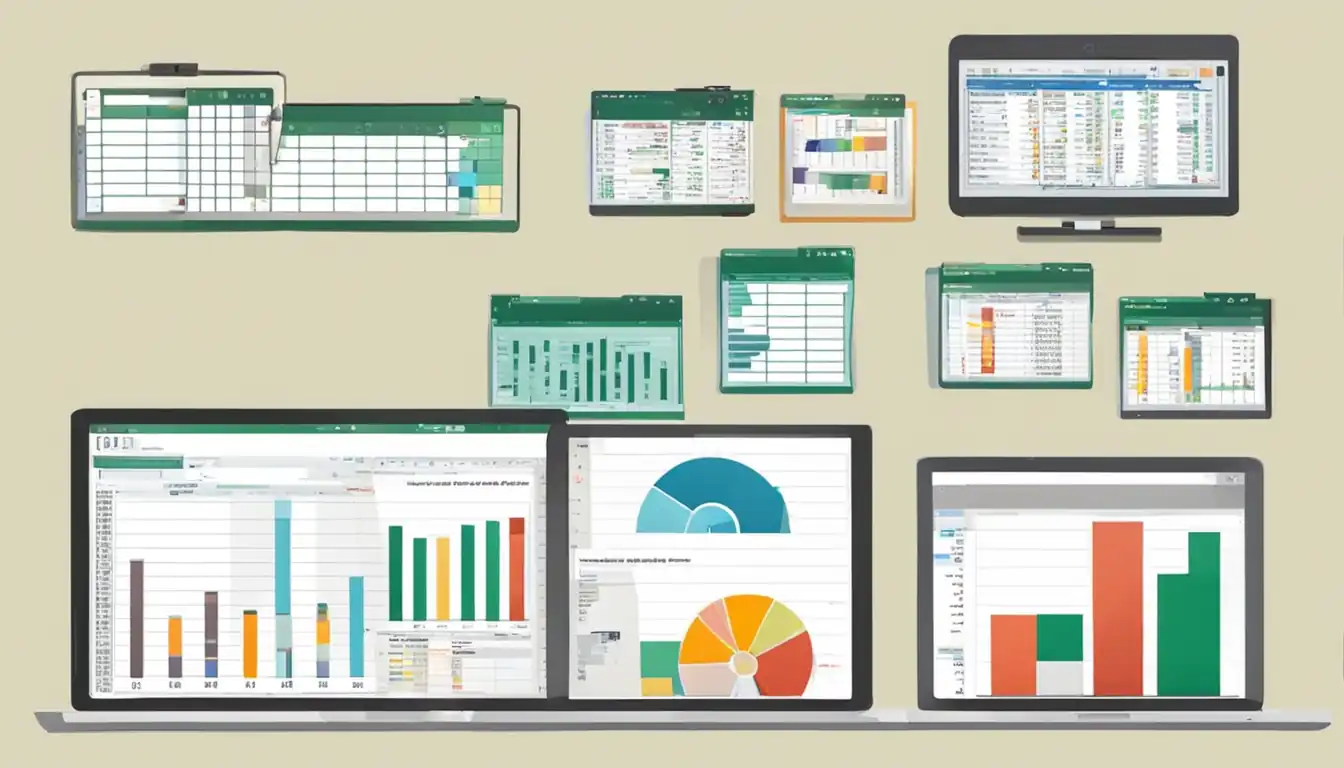Understanding Common Document File Types

Introduction to Document File Types
When working with documents, it is essential to understand the different file types available. Choosing the right file type can significantly impact the usability and compatibility of your documents. In this article, we will explore the most common document file types and their characteristics.
The Importance of Choosing the Right File Type
Selecting the appropriate file type is crucial for several reasons. Firstly, it ensures that your document can be opened and viewed correctly by the intended recipients. Secondly, it affects the file size, which can impact storage and transfer efficiency. Lastly, certain file types offer specific features and functionalities that may be necessary for your document's purpose. Now, let's dive into the various document file types and their specific use cases.
Text Document File Types
Text documents are widely used for creating and editing written content. Here are some of the most common text document file types:
DOC and DOCX: Microsoft Word Files
Microsoft Word is one of the most popular word processing software, and its file types include DOC and DOCX. These formats support rich formatting options, such as font styles, images, and tables. Using Microsoft Word allows for easy collaboration and compatibility with other Microsoft Office applications.
TXT: Plain Text Files
TXT files are plain text documents that contain unformatted text. They do not support any formatting options, such as font styles or images. However, they are lightweight and compatible with almost all text editors. TXT files are commonly used for storing and sharing simple text-based information.
PDF: Portable Document Format
PDF is a widely recognized file format that preserves the formatting and layout of a document, regardless of the software or operating system used to view it. PDF files can include text, images, hyperlinks, and interactive elements. They are commonly used for sharing documents that need to be printed or viewed consistently across different devices and platforms.
RTF: Rich Text Format
RTF files are similar to DOC and DOCX files in terms of supporting rich formatting options. However, RTF files are compatible with multiple word processing software, making them a versatile choice for sharing documents across different platforms. RTF files are commonly used when compatibility with various software is a priority.
Spreadsheet File Types
 Spreadsheets are used for organizing and analyzing data. Here are the most common spreadsheet file types:
Spreadsheets are used for organizing and analyzing data. Here are the most common spreadsheet file types:
XLS and XLSX: Microsoft Excel Files
Microsoft Excel is a powerful spreadsheet software that offers extensive data manipulation and analysis capabilities. XLS and XLSX are the file formats used by Excel. These formats support multiple sheets, formulas, charts, and macros. Using Microsoft Excel allows for complex data management and advanced calculations.
ODS: OpenDocument Spreadsheet
ODS is an open-source file format used by software like LibreOffice and OpenOffice Calc. It supports similar features to XLSX, including multiple sheets, formulas, and charts. ODS files provide compatibility with open-source software and can be easily converted to other spreadsheet formats.
Presentation File Types
Presentation files are used for creating slideshows and delivering visual content. Here are the most common presentation file types:
PPT and PPTX: Microsoft PowerPoint Files
Microsoft PowerPoint is widely used for creating professional presentations. PPT and PPTX are the file formats used by PowerPoint. These formats support slide layouts, animations, transitions, and multimedia elements. Using Microsoft PowerPoint allows for dynamic and visually appealing presentations.
ODP: OpenDocument Presentation
ODP is the file format used by software like LibreOffice and OpenOffice Impress. It offers similar features to PPTX, including slide layouts, animations, and multimedia support. ODP files provide compatibility with open-source software and can be easily converted to other presentation formats.
Image Document File Types
 Images are often included in documents to enhance visual appeal and convey information. Here are the most common image document file types:
Images are often included in documents to enhance visual appeal and convey information. Here are the most common image document file types:
JPEG and PNG: Common Image Formats in Documents
JPEG and PNG are widely used image formats in documents. JPEG is suitable for photographs and complex images, while PNG is ideal for images with transparency or sharp edges. These formats ensure high-quality visuals while maintaining reasonable file sizes.
SVG: Scalable Vector Graphics
SVG is a vector-based image format that allows for scalability without losing quality. It is commonly used for logos, icons, and illustrations in documents. SVG files can be easily edited and resized without compromising image clarity.
Data and Database File Types
Data files are used for storing structured information, while database files contain organized collections of data. Here are the most common data and database file types:
CSV: Comma-Separated Values
CSV files store tabular data in plain text format, with each value separated by a comma. They are widely supported by spreadsheet software and databases. CSV files are commonly used for data exchange between different applications and systems.
JSON: JavaScript Object Notation
JSON is a lightweight data interchange format that is easy to read and write for humans and machines. It is commonly used for storing and exchanging structured data between web applications. JSON files are highly compatible with programming languages and databases.
XML: eXtensible Markup Language
XML is a markup language that defines rules for encoding documents in a format that is both human-readable and machine-readable. It is commonly used for storing and exchanging structured data between different systems. XML files provide flexibility and extensibility for various applications.
Compression and Archive File Types
Compression and archive file types are used for bundling and compressing multiple files into a single file. Here are the most common compression and archive file types:
ZIP: Compressed Archive File
ZIP is a widely used file compression format that combines multiple files into a single archive. It reduces file size and makes it easier to transfer and store files. ZIP files can be easily extracted using various software applications.
RAR: Roshal Archive
RAR is another file compression format that offers higher compression ratios compared to ZIP. It is commonly used for compressing large files or collections of files. RAR files require specific software to extract the contents.
eBook File Types
eBook files are used for reading digital books on various devices. Here are the most common eBook file types:
EPUB: Electronic Publication
EPUB is a widely supported eBook format that allows for dynamic resizing and reflowable text. It is compatible with most eBook readers and mobile devices. EPUB files can include text, images, and interactive elements.
MOBI: Mobipocket eBook
MOBI is an eBook format primarily used by Amazon Kindle devices. It supports features like bookmarks, annotations, and adjustable font sizes. MOBI files can be read on Kindle devices and Kindle reading apps.
Audio and Video Document File Types
 Audio and video files are used for multimedia content in documents. Here are the most common audio and video document file types:
Audio and video files are used for multimedia content in documents. Here are the most common audio and video document file types:
MP3: Audio File Format
MP3 is a widely supported audio file format known for its high compression ratio without significant loss of audio quality. It is commonly used for storing and playing music and other audio recordings.
MP4: Video File Format
MP4 is a popular video file format that offers efficient compression and high-quality video playback. It is widely supported by various devices and platforms. MP4 files can include audio, video, and subtitles.
Choosing the Right File Type for Your Needs
 When selecting a file type for your document, consider the following factors:
When selecting a file type for your document, consider the following factors:
- Purpose: Determine the intended use of the document and the features required.
- Compatibility: Ensure that the file type is compatible with the software and devices used by the document recipients.
- File Size: Consider the impact of file size on storage, transfer, and loading times.
- Formatting Options: Evaluate the formatting options available in different file types and choose the one that best suits your needs.
Conclusion
In this article, we have explored the most common document file types and their characteristics. Understanding these file types is essential for creating, sharing, and managing documents effectively. By choosing the right file type, you can ensure compatibility, maintain document integrity, and optimize the user experience. Remember to consider the purpose, compatibility, file size, and formatting options when selecting a file type for your documents.